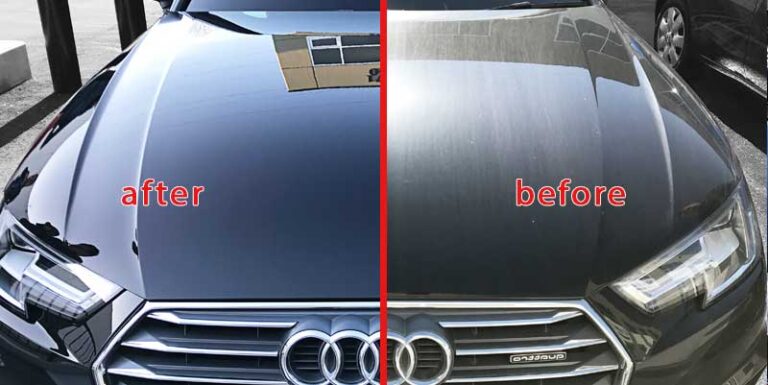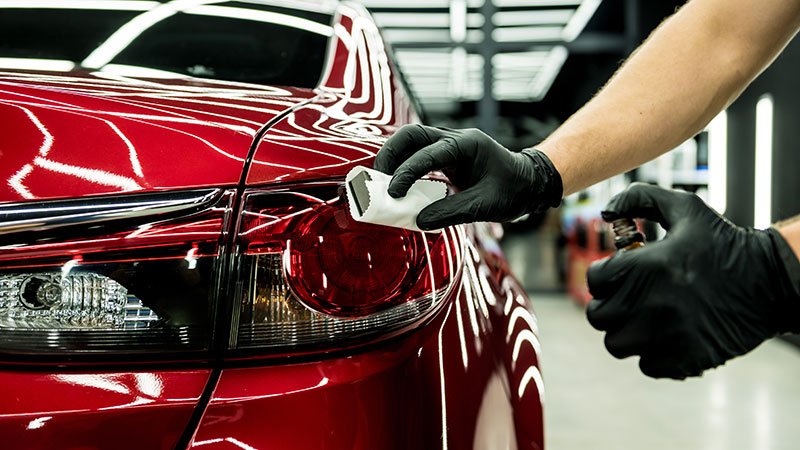Just How Ceramic Coating Philadelphia Saves Money And Time on Upkeep
Just How Ceramic Coating Philadelphia Saves Money And Time on Upkeep
Blog Article
Why Ceramic Coating Is the Ultimate Service for a Remarkable End Up
Ceramic finish has actually become a leading solution for those seeking a flawless surface for their automobiles, many thanks to its impressive toughness and safety attributes. This sophisticated liquid polymer not only bonds seamlessly with factory paint however also supplies a formidable barrier against common threats such as scrapes, UV rays, and toxic wastes. Its hydrophobic homes streamline maintenance while boosting visual allure. However, comprehending how this technology compares to traditional approaches and discovering its application subtleties can expose a lot more about its value. What variables absolutely set ceramic layer apart?
What Is Ceramic Finishing?

When used appropriately, ceramic finish creates a hydrophobic surface area that repels water and dirt, making it much easier to preserve and cleanse. Unlike typical waxes or sealants, which generally use brief defense, ceramic finishings can last for a number of years, depending on the product top quality and application technique. The process of using ceramic finish needs thorough prep work, consisting of complete cleansing and sometimes repaint adjustment, to make sure optimum bonding and efficiency.
Ceramic coatings are not limited to automotive surface areas; they can likewise be made use of on different materials, consisting of glass, steel, and plastics, supplying a functional service for enhancing protection. Overall, ceramic covering stands for a substantial development in surface area protection innovation, combining both useful and visual benefits for a large range of applications.
Advantages of Ceramic Covering
While numerous surface protection choices exist, the advantages of ceramic coating attract attention because of its distinct residential or commercial properties and durable performance. Among the key advantages is its remarkable toughness. Ceramic Coating Philadelphia. Unlike typical wax or sealers that require regular reapplication, ceramic coverings offer a resilient layer that can last for numerous years, considerably reducing maintenance initiatives
One more noteworthy benefit is enhanced defense versus ecological pollutants. Ceramic layers create a hydrophobic surface that drives away water, dirt, and numerous toxins, making it simpler to clean up. This feature not just maintains the automobile's appearance yet also minimizes the danger of deterioration and oxidation, especially in extreme weather condition conditions.
Furthermore, ceramic layers supply exceptional resistance to UV rays, stopping fading and destruction of paint in time. This UV protection is crucial for preserving the aesthetic value of surface areas and lorries exposed to direct sunshine.
Additionally, the shiny surface attained with ceramic finishing enhances the general aesthetic appeal, providing surface areas a showroom-quality sparkle. On the whole, ceramic finishings stand for a considerable advancement in surface security innovation, supplying enduring benefits that accommodate both useful and aesthetic requirements.
How It Functions
Recognizing the scientific research behind ceramic finishes exposes exactly how they offer such impressive protection and long life. At its core, a ceramic finish is a liquid polymer that chemically bonds with the car's manufacturing facility paint. This bonding develops a protective layer that is both oleophobic and hydrophobic, repelling water, dust, and oil. The main component of most ceramic coatings is silicon dioxide (SiO2), which is stemmed from quartz. This compound adds to the finish's hardness and resistance to scrapes, UV rays, and environmental impurities.
The application procedure involves multiple actions, consisting of surface preparation, which is essential to accomplishing ideal adhesion. Once applied, the covering undergoes a curing procedure, throughout which it solidifies and forms a semi-permanent bond with the paint surface area. This bond is what identifies ceramic coverings from conventional waxes and sealers, supplying a longer-lasting safety barrier that can endure for years.
Additionally, the thickness of the layer can improve its safety top qualities, making certain that it can endure rough problems. Inevitably, the science of ceramic finishings combines advanced materials with ingenious application methods to supply an unrivaled degree of security and aesthetic enhancement for cars.
Comparison With Standard Approaches
The advantages of ceramic coverings come to be especially apparent when compared to standard paint security methods such as sealers and waxes. While waxes provide a short-term sparkle, usually lasting a few weeks to a number of months, ceramic coatings offer a resilient safety layer that can withstand for a number of years. This longevity considerably lowers the frequency of reapplication, making ceramic finishings an extra cost-efficient service in time.
In addition, traditional approaches usually require comprehensive preparation and multiple applications to accomplish a sufficient level of defense. On the other hand, ceramic finishings bond at a molecular degree with the vehicle's surface area, creating a durable guard versus environmental contaminants like UV rays, acid rain, and road salts. This bond improves the lorry's resistance to scrapes and swirl marks, which prevail with traditional waxes and sealants.
Furthermore, the hydrophobic residential or commercial properties of ceramic finishings drive away water and dirt, resulting in less complicated cleansing and upkeep. On the here are the findings other hand, wax and sealant-treated surface areas can bring in gunk, demanding even more constant washing - Ceramic Coating Philadelphia. In general, ceramic finishings not only supply superior protection yet additionally provide a more long-lasting and visually appealing coating, establishing them as the recommended selection for critical automobile proprietors
Application and Upkeep Tips

Making use of a foam applicator, use the coating in small sections, complying with the producer's guidelines concerning density and overlap. Permit sufficient curing time between coats, usually 24-hour, to ensure proper bonding. After application, it is vital to prevent direct exposure to water or severe elements for at the very least a week to permit the layer to fully treat.
Furthermore, making use of a ceramic maintenance spray can navigate to these guys enhance the finish's hydrophobic homes and longevity. Regular evaluations for any indications of wear will assist keep the finishing's stability and maintain that immaculate surface.
Conclusion
In conclusion, ceramic covering emerges as an exceptional alternative for attaining a remarkable vehicle finish. By forming a robust bond with manufacturing facility paint, ceramic finishing effectively shields versus scratches, UV rays, and environmental contaminants.

Report this page